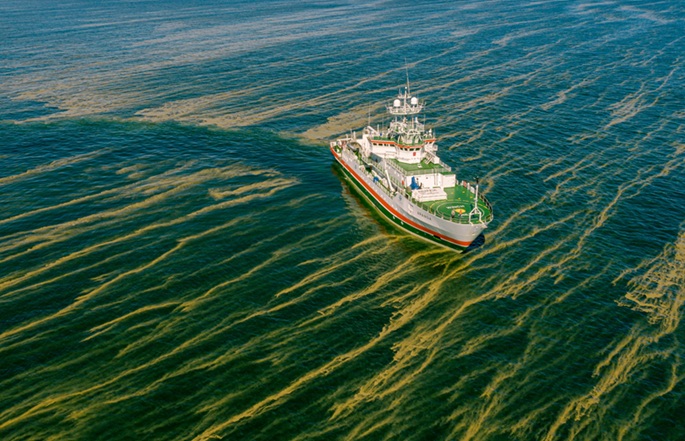Risk of blue-green algae blooms remains high in seas
Published : 09 Jun 2025, 23:00
Extensive blue-green algae blooms are likely to occur in the open sea areas close to Finland during the summer as the nutrient situation in the Baltic Sea remains largely unchanged, said the Finnish Environment Institute (SYKE) in a press release on Monday.
The risk of the formation of rafts of blue-green algae is considerable in the northern part of the main basin of the Baltic Sea as well as in the Gulf of Finland, the Archipelago Sea and a large part of the Bothnian Sea. The risk remains low in the Bothnian Bay.
The extent of algae rafts and the duration of the blue-green algae bloom are affected by the temperature and wind conditions of the summer.
If the nutrient situation in the main basin of the Baltic Sea improved, this would significantly reduce mass occurrences of blue-green algae, as the status of the main basin is reflected in the situation of open sea areas in the north.
Local variations in the blue-green algae situation may be great on the coast and in the archipelago and also take place faster than in the open sea. Local blue-green algae blooms have also occurred annually on the Bothnian Bay coast.
The risk remains low in the Bothnian Bay. The white area has not been evaluated because no winter nutrient data are available for the area, said SYKE.
The nutrient situation in the Baltic Sea continues to create favourable conditions for blue-green algae blooms in open sea areas close to Finland, with the exception of the Bothnian Bay.
Last winter, the prevailing strong westerly winds promoted the mixing of water layers in the main basin of the Baltic Sea and in the Gulf of Finland. While the oxygen situation in the Gulf of Finland improved considerably, the mixing unfortunately brought plenty of phosphorus up to the surface layers.
The phosphorus content in the Bothnian Sea has increased in the 2000s, and the risk of blue-green algae blooms appears to persist in this area.
Large blue-green algae blooms usually begin to occur in the open sea area after Midsummer.
Rafts of blue-green algae form in the open sea following a period of warm and sunny weather of a couple of weeks, especially if it includes a few days of slack winds.
In summer, strong northerly winds may cause an upwelling of phosphorus-rich bottom water into the surface layer, which may contribute to blue-green algae growth.
This summer, the SYKE will report weekly on the general blue-green algae situation between 19 June and 7 August.


